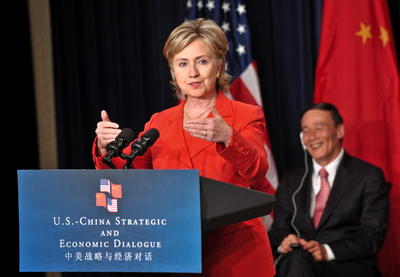Under the usual fixed exchange rate model, such a policy would result in large-scale increases in the domestic money supply, which would generate internal inflation and eventually unwind the trade and payments surplus. But China has tried to perpetuate its trade and payments surplus by sterilising the foreign exchange inflows with step-wise increases in the reserve requirements of its commercial banks with the central bank. It does this in order to fend off the inflation that a rapid money supply increase would otherwise cause.
But internal cracks are now appearing in this policy, since sterilisation of this form has its limits. Inflation continues to show signs of taking off in China, while small-scale borrowers are finding it difficult to obtain credit. So, China’s monetary and exchange rate policy is perverse from an internal balance perspective. The best thing China could do to contain its internal inflation is to let its currency appreciate, which would also improve real wages within the Chinese economy.
The rest of the world already knows that China’s policy is perverse from an external balance perspective. Such a large and continuous case of mercantilistic monetary and exchange rate policy has never before been thrust upon the world economy. In reality, it required exchange controls and lack of free-market capital mobility to maintain this policy for such a long time.
Many other countries need to expand their exports of manufactured goods to avoid recession. But the exchange rate mechanism for improving their competitiveness vis-à-vis Chinese manufactures is largely unavailable to them, unless they are willing and able to depreciate their currencies against the US dollar, and thus against the Chinese currency. Given the recent US monetary policy, this has not been a practical solution for many manufacturing countries — several countries had to intervene in the exchange market to offset appreciation pressure. And expansionary US monetary policy could not change the one exchange rate where its impact should have been most pronounced — the renminbi-dollar exchange rate.
China’s role on the demand side of primary commodity markets, and its role in maintaining world demand for these commodities through the recent recession, is helpful to primary commodity exporters like Australia and Canada. But China’s role on the supply side of manufactured goods markets should also be considered. China’s supply of manufactured goods has lowered the demand for all other countries’ manufactured products, and prolonged the recession for many countries whose exports are concentrated in manufactured and processed goods.
If China continues to maintain its doubly perverse policies, Chinese inflation and the recession in other countries will also continue. Ultimately, if it maintains its exchange rate with the US dollar, China’s competitive advantage will eventually unwind, painfully for almost everyone — including the Chinese, via inflation. Alternatively, the smooth unwinding of China’s competitive position would require appropriate flexibility in the renminbi-dollar exchange rate. Deflationary pressure needs to be taken off countries that have serious trade and payments deficits.
The continuation of policies that perpetuate trade imbalances needs to end if China is to become a fully functioning member of the international payments system. And the Chinese currency cannot become one of the world’s reserve currencies until China is running an overall deficit in its trade and payments. Reserve currencies only emerge in unique circumstances where a large economy, whose policies and purchasing power are trusted for their on-going stability, runs an on-going payments deficit, which then can become everyone else’s surplus. Otherwise, currency-specific non-borrowed exchange reserve accumulations cannot occur.
Chinese current account surpluses contribute to many other countries’ recessions. But greater recognition of this fact, if coupled with a double-dip recession (which for many countries would be difficult to tackle given policy exhaustion, deficits and debt), could result in increased trade protection — and potentially a trade war. This is the last thing the world economy needs right now.
In the short term, the world economy requires a massive Chinese purchase of Greek, Irish or Portuguese sovereign bonds, but it is clear that China, like everyone else, does not want to accept the ‘haircut’. Alternatively, major Chinese investment in European commercial banks would also be useful. The absolute exchange rate rigidity of the common euro currency, and the imposed rigidity of the renminbi–dollar exchange rate, makes it exceedingly difficult to rebalance the world economy.
Dr Brian Scarfe runs a private consulting company, BriMar Consultants Ltd, and teaches courses in cost-benefit analysis, resource economics and international economics at the University of Victoria.


I personally don’t buy the argument that China’s currency is the cause of global financial ills but that argument has been made better elsewhere and by people with a better grasp of the fundamentals. So I believe that there is very little point to this article.